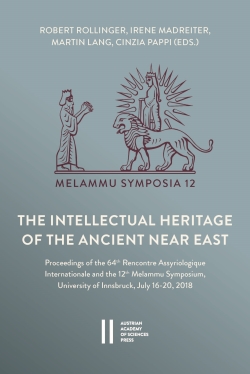
The Intellectual Heritage of the Ancient Near East, pp. 661-677, 2023/04/12
Proceedings of the 64th Rencontre Assyriologique Internationale and the 12th Melammu Symposium, University of Innsbruck, July 16‒20, 2018
In the present contribution, we intend to trace a history of the earth starting from the topological centrality of Babylon and debating thematically, from the protohistoric to historical periods, some of the ancient Near Eastern spatial perceptions mainly inspired by so-called mythopoeic thought. Indeed, to select, detail, and integrate some figurative and textual aspects of the ancient Mesopotamian spatial perceptions is important to define different perceptual maps of the landscapes. Moreover, the transformations of these cognitive maps through the millennia can be used to record the distances between modern geographies (based upon an artificial translation of both natural and anthropic features) and the ancient perceptions of space and time, mainly inspired by cosmic geographies. The epistemic framework of the Atlas of the Ancient Near East (AANE), a Great Athenaeum project of the Department of Sciences of Antiquity at Sapienza University of Rome, started in 2016. It would support, in a multidisciplinary way, the encoding, the analysis and the simulation of the ancient Near Eastern settlements and landscapes integrating the complementary grammars of the mythopoeic, historical and digital approaches.